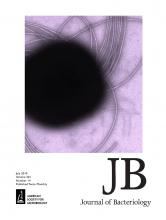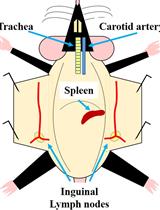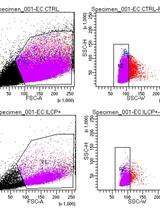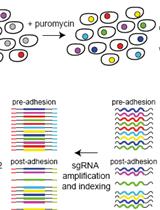- EN - English
- CN - 中文
Preparation of Actinoplanes missouriensis Zoospores and Assay for Their Adherence to Solid Surfaces
密苏里游动放线菌孢子的制备及其固体表面黏附力检测
发布: 2019年12月20日第9卷第24期 DOI: 10.21769/BioProtoc.3458 浏览次数: 4125
评审: David A. CisnerosTimo A LehtiJose Antonio Reyes-Darias
Abstract
Spherical zoospores of a rare actinomycete, Actinoplanes missouriensis, adhere to various hydrophobic solid surfaces by means of type IV pili. The purpose of this protocol is to provide detailed descriptions of the preparation of A. missouriensis zoospores and an assay for the adhesion of the zoospores to solid surfaces. This adhesion assay, which measures numbers of zoospores that adhered to the dish surface and swimming zoospores in a tunnel chamber by using a phase-contrast microscope, can also be used for swimming cells of other microorganisms.
Keywords: Adhesion (黏附)Background
Zoospores are motile asexual cells for reproduction that swim in aquatic environments by means of flagella. Although zoospores are often described as a kind of spore because of their function in the life cycle of producing organisms, attention must be paid to the fact that they are not dormant cells when they are swimming. Both eukaryotic and prokaryotic organisms produce zoospores, but eukaryotic zoospores produced by protists and fungi are more well-known compared with prokaryotic zoospores. Members of a fungal phylum of chytridiomycota, as well as oomycetes (which are pseudomycetes), are known to develop zoospores (Sharma et al., 2015; Letcher and Powell, 2017). Zoospores of these microorganisms swim in aquatic environments and adhere to the surface of organic substances, including parasitism hosts and dead bodies of animals and plants. In bacteria, several rare actinomycetes are known to produce zoospores, which are developed in a sporangium or by the fragmentation of aerial hyphae. A wide variety of bacterial zoospores have been isolated from natural environments by taking advantage of their chemotactic property (Hayakawa et al., 1991). Importantly, bacterial zoospores arise from dormant sporangiospores or arthrospores. A rare actinomycete Actinoplanes missouriensis produces terminal sporangia that contain a few hundred flagellated spores. The spores are dormant in a sporangium and, are activated and released to external environments when the sporangium is immersed in water. Although the presence of pili had not been reported in bacterial zoospores, we recently found a biosynthetic gene cluster for functional type IV pili in the A. missouriensis genome sequence, genetically analyzed the gene cluster, and successfully observed the unprecedented zoospore pili in A. missouriensis (Kimura et al., 2019). Furthermore, we developed an adhesion assay for A. missouriensis zoospores to characterize the function of the zoospore pili to attach the zoospores to solid surfaces. A similar adhesion assay for Mycoplasma has already been published by Kasai and Miyata (2013). The adhesion assay described in this protocol can be used not only for zoospores of other species but also for swimming cells of other microorganisms.
Materials and Reagents
- Coverslips (18 x 18 mm, Matsunami Glass Industry, catalog number: C218181)
- Glass dish (f 35 mm, AGC Techno Glass, catalog number: 3970-035)
- Polystyrene dish (f 35 mm, AGC Techno Glass, catalog number: 1000-035)
- Polystyrene dish (f 90 mm, Sansei Medical, catalog number: 01-013)
- 1.5-ml centrifuge tube (Greiner Bio-One, catalog number: J618201)
- 50-ml centrifuge tube (Corning, catalog number: 430829)
- Shaking (Sakaguchi) flask (Sansyo, catalog number: 82-0317)
- Double-sided tape (width 15 mm, thickness 0.086 mm, NICETACK, Nichiban)
- WhatmanTM Filter paper (GE Healthcare Life Sciences, catalog number: 3030-917)
- Toothpick
- A. missouriensis 431T (NBRC 102363T)
- Yeast extract (Becton, Dickinson and Company, catalog number: 212750)
- Meat extract (Kyokuto, catalog number: 551-01240-8)
- N-Z-Amine® (FUJIFILM Wako Pure Chemical, catalog number: 146-08675)
- D (+)-Maltose monohydrate (FUJIFILM Wako Pure Chemical, catalog number: 130-00615)
- Agar powder (Kokusan Chemical, catalog number: 2111136)
- Peptone (Becton, Dickinson and Company, catalog number: 211677)
- Magnesium sulfate heptahydrate (MgSO4·7H2O) (Kokusan Chemical, catalog number: 2114992)
- Saccharose (Kokusan Chemical, catalog number: 2111624)
- Casamino acids, technical (Becton, Dickinson and Company, catalog number: 223120)
- Dipotassium hydrogen phosphate (K2HPO4) (Kokusan Chemical, catalog number: 2115140)
- Nitrohumic acid (Tokyo Chemical Industry, catalog number: H0161)
- Sodium hydroxide (NaOH) (Kokusan Chemical, catalog number: 2112744)
- Zinc chloride (ZnCl2) (FUJIFILM Wako Pure Chemical, catalog number: 263-00271)
- Iron (III) chloride hexahydrate (FeCl3·6H2O) (FUJIFILM Wako Pure Chemical, catalog number: 091-00872)
- Cupric chloride, dihydrate (CuCl2·2H2O) (Kokusan Chemical, catalog number: 2150417)
- Manganese (II) chloride tetrahydrate (MnCl2·4H2O) (FUJIFILM Wako Pure Chemical, catalog number: 139-00722)
- Sodium tetraborate (Na2B4O7·10H2O) (Kokusan Chemical, catalog number: 2114089)
- Ammonium molybdate ((NH4)6Mo7O24·4H2O) (Kokusan Chemical, catalog number: 2152738)
- Sodium chloride (NaCl) (Kokusan Chemical, catalog number: 2110733)
- Bovine serum albumin (BSA) (Sigma-Aldrich, catalog number: A9647)
- Ammonium hydrogencarbonate (NH4HCO3) (FUJIFILM Wako Pure Chemical, catalog number: 017-02875)
- YBNM agar medium (see Recipes)
- PYM broth (see Recipes)
- HAT agar medium (see Recipes)
- Nitrohumic acid solution (see Recipes)
- Trace element solution (see Recipes)
Equipment
- Mortar and pestle
- Laminar flow cabinet
- Flask shaker
- Centrifuge (Kubota Corp., model: 5200)
- Incubator (PHC Holdings, model: MIR-154)
- Micropipette
- Phase-contrast microscope (Olympus, model: IX73)
- Objective lens (Olympus, model: UPLFLN20×PH)
- Optical table (JVI, model: HAX-0605)
- High speed recorder system (Digimo, model: LRH1540) with complementary metal-oxide semiconductor (CMOS) camera
Software
- ImageJ (https://imagej.nih.gov/ij/)
Procedure
文章信息
版权信息
© 2019 The Authors; exclusive licensee Bio-protocol LLC.
如何引用
Tezuka, T., Nakane, D., Kimura, T. and Ohnishi, Y. (2019). Preparation of Actinoplanes missouriensis Zoospores and Assay for Their Adherence to Solid Surfaces. Bio-protocol 9(24): e3458. DOI: 10.21769/BioProtoc.3458.
分类
微生物学 > 微生物生理学
细胞生物学 > 细胞运动 > 细胞粘附
您对这篇实验方法有问题吗?
在此处发布您的问题,我们将邀请本文作者来回答。同时,我们会将您的问题发布到Bio-protocol Exchange,以便寻求社区成员的帮助。
Share
Bluesky
X
Copy link













